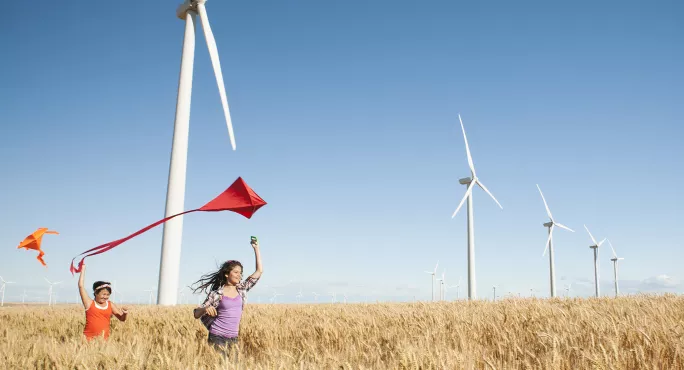DfE told to develop decarbonising plan for schools

The Department for Education has insufficient plans for decarbonising the school estate, a public spending watchdog has warned today.
The DfE: Environmental Sustainability Overview report, conducted by the National Audit Office (NAO), also highlights a lack of a national overview in government about the sustainability of the school estate and the potential risks posed by climate change.
This means that the DfE cannot target funding or interventions for schools, the watchdog has warned.
The NAO has also called on the DfE to produce a decarbonisation plan to define its progress towards net zero for its estates, including schools.
- Feature: Climate change and the challenges facing education
- Case study: Fossil-free school leads the way
- Linked: 700,000 pupils in schools needing major repair
The NAO notes that the DfE has started work to improve data collection to enable it to monitor and target funding better.
It explains how the government plans to standardise emissions data; develop a climate risk framework to assess the risks to schools from flooding, overheating and water scarcity; and set emissions targets for the sector by 2025.
It also highlights how the DfE is piloting “innovative ways to reduce emissions and increase energy efficiency in school buildings, in order to assess which initiatives justify future investment”.
But the NAO report also warns that there is uncertainty surrounding what impact the DfE’s current schemes will have on reducing total carbon emissions across the sector, with the report finding it unlikely they will come close to achieving the government’s 75 per cent reduction target for 2037.
Schools and universities produce 37 per cent of public sector carbon emissions, according to the report.
The NAO report says: “Current sustainability schemes are fairly small-scale and DfE has not secured funding for the strategy beyond 2025.
“DfE estimates that at its current rate of progress, 80 per cent of the existing estate will not be retrofitted by 2050 so it needs to identify ways to accelerate change.”
The watchdog has published a separate report today, which warns that 700,000 pupils are being educated in school buildings in need of major repair.
The NAO recommends that the department considers how its sustainability ambitions can be achieved when addressing the condition of the school estate.
Gareth Davies, comptroller and auditor general at the NAO, called on the DfE to “improve its understanding of where schools are most at risk so it can balance addressing the most urgent risks while investing enough in maintenance, reducing carbon emissions and climate change adaptation measures to achieve its objectives and secure longer-term value for money”.
One sustainability requirement, which the department has already implemented, is the 2021 standardised net-zero specification for the construction of centrally funded new-build schools.
So far, there are six of these net-zero schools in operation, with a further 28 under construction and an intention to rebuild 500 existing schools by 2030.
The NAO’s report makes a number of key recommendations; these include creating governance and accountability arrangements for its sustainability strategy by the end of 2023 and, by April 2024, implementing a plan to measure the benefits of the strategy.
It also calls on the department to “develop a clear evidence base of what sustainability measures work in schools” and establish where to target its funding within the school estate as part of its preparations for the next Spending Review.
And it says that once an emissions target is in place for the education sector, the DfE should publish a decarbonisation plan to define progress towards net zero for its estates.
A DfE spokesperson said: “The difficulty of decarbonising a large estate is not unique to the education sector and work of this scale takes time.
“We have already improved our building specifications so that they are better than national standards. All of our new buildings are net zero in operation and designed for a 2C temperature rise, and resilient to a 4C temperature rise.
“A part of our climate change and sustainability strategy - a first of its kind for an education system - we are assessing emissions and the risk posed to schools by impacts of climate change, like flooding. This will allow us to set targets and take action efficiently and with least disruption.”
You need a Tes subscription to read this article
Subscribe now to read this article and get other subscriber-only content:
- Unlimited access to all Tes magazine content
- Exclusive subscriber-only stories
- Award-winning email newsletters
Already a subscriber? Log in
You need a subscription to read this article
Subscribe now to read this article and get other subscriber-only content, including:
- Unlimited access to all Tes magazine content
- Exclusive subscriber-only stories
- Award-winning email newsletters
topics in this article



